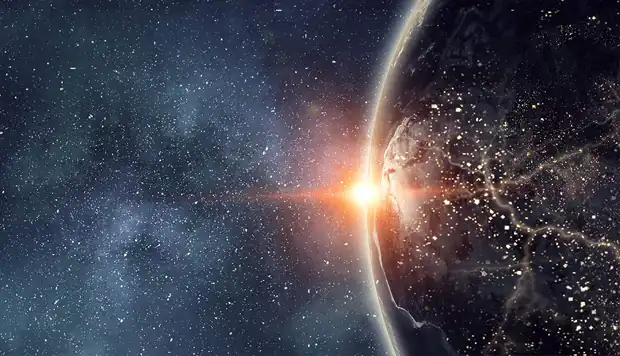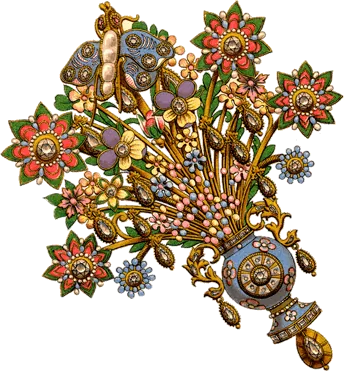The Hebrew word, Bereshit, is the very first word in Scripture. The world literally means: “At the head of...” The common Latin expression, ex nihilo – “out of nothing,” is often used to describe the process of what comes next.
At the Head of Creation
The Torah begins with the famous words of Genesis 1:1, “In the Beginning.” The Hebrew word, Bereshit, is the very first word in Scripture. The word itself contains the root, rosh, which means ‘head’. The verse literally reads: “At the head of...”
The next phrase that follows is “God created.” The word for creating is, bara, a process that describes creation in terms of forming matter from absolute nothing. The common Latin expression, ex nihilo – “out of nothing,” is often used to describe the process. Thus, we find a very revealing description of God’s activity at the head of creation: “At the head of creating from absolute nothing – God [made] the heavens and the earth.”
For countless generations, scientists, scholars, and theologians have speculated and debated the intricacies of the Genesis account. Yet, in spite of all the speculation, literal and allegorical interpretations, timelines and theories, all of creation begs the question: What necessity was there for God to create the universe? Certainly God, in His infinite capacity, didn’t need anything from anyone. He is sustained by His own incomparable existence; and is the sustaining source of life itself. So why did God create the world? Perhaps the most compelling observation can be found in the words of Yeshua himself: “Why do you call me good? No one is good except One – God (Mk. 10:18).”
The Goodness of Creation
Throughout the creation narrative, we perceive the ultimately “good One” bestowing His own goodness upon man. In the beginning, we read about the formation of light and darkness, land and sea, rivers and springs, plants and animals, and these are all defined as the product of God’s goodness. Yet, it isn’t until man comes along that God refers to creation as “tov me’od” – exceedingly good (Gen 1:31). The crowning moment of all of creation is when Adam first opens his eyes, beholds his King, and assumes his mission: To fill and subdue the earth.
With no benefit to God other than the motivation to share His goodness, we can perceive God’s creation as the first act of God’s love for humanity (Kaplan, 1984, 10). God creates a perfect home for mankind, and the two parties work in a unique partnership: God the origin and sustainer of life; Adam, endowed like his Creator with the task of influencing the universe toward the harmonious service of Hashem.
In Genesis 1:26, Adam is described as being created B’tzelem Elohim – in God’s image. What does it mean to be created in God’s image? If the reader interprets the text in physical terms, the nature of God presents obvious problems: “Take careful heed to yourselves, for you saw no form when the LORD spoke to you at Horeb out of the midst of the fire (Deut. 4:15).” The position the Torah emphasizes is quite clear: Humans are physical beings, but God is not a human being (Num. 23:19). Yeshua elaborates further in the Gospel of John: “God is spirit, and his worshipers must worship in Spirit and in truth (Jn. 4:24).” From the beginning, this obvious fact is apparent as the second verse of Genesis describes the presence of “Ruach Elohim”, the Spirit of God, hovering over the waters (Gen. 1:2).
The Dynamics of Creation
Throughout the creation account, we see the Spirit of God at work developing creation through a series of distinct activities. When describing God’s creative activities, the Torah expresses His actions in three different terms: Bara – to create ex nihilo; Asah – to make; and Yatzar – to form. The three distinct terms hold different and respective meanings.
As mentioned above, God’s first act at creation was, bara, creating from absolute nothing. As the narrative progresses, we frequently encounter asah - a very general word used many times in the Bible to describe the Divine or human activity of “making” from what is formed. Yatzar is less common, but describes the activity of forming something out of what has already been created through bara. The sense of the word is to shape something out of existing elements.
When the Torah describes the emergence of animal life, it describes the earth “bringing forth living creatures according to its kind (Gen. 1:24).” The notion is that after God fashioned the universe, the earth itself possessed all the necessary elements for bringing forth life (cf. ibid. 1:11). The creatures are described as being made, asah, by God (ibid. 1:25). In essence, God made them from what was already created.
Unique to creation is man, who is described as being created through three distinct operations:
BARA: So God created [bara] Man in His image, in the image of God He created [bara] him; male and female He created [bara] them (Gen. 1:27).”
ASAH: And God said, “Let us make [asah] Man in Our image, after Our likeness.” (Gen. 1:26)
YATZAR: And the LORD God formed [yatzar] man of dust from the ground, and He blew into his nostrils the soul [Neshama] of life; and man became a living being (Gen 2:7).
Remarkably, the Torah explains that there is an aspect of human existence that was created by God ex nihilo – out of nothing. In stark contrast to the other creatures of the universe, man is not only described as being created by God; but also formed by God, and made by God:
The Climax of Creation
The climax of the creation account in Genesis 1 sets the stage: Adam is created in God’s image, male and female; and together they function to rule God’s creation. The Divine commission charged to Adam invokes qualities similar to the Creator: God is the King of the Universe, and mankind is the guardian of Creation; God exercises creativity, and Adam possesses creative qualities (Gen. 2:19); God acts freely according to His will, and Adam possesses free will. The prominent medieval philosopher and physician, Moshe ben Maimon (Rambam), summarizes the concept of B’tzelem Elohim as follows:
“Among all living creatures, Man alone is endowed – like his Creator – with morality, reason and free will. He can know and love God and can hold spiritual communion with Him; and Man alone can guide his actions through reason. It is in this sense that the Torah describes Man as having been created in God’s image and likeness (Rambam, Guide for the Perplexed 1:1).”
In light of Adam’s Divine spiritual and intellectual endowments, the function of mankind in the universe is to rule creation as God’s physical, intellectual, and spiritual representative; tasked with disseminating the qualities of God in the world and developing the hidden potentials of God’s creation. The idea is that mankind co-labors with the Creator; functioning to provoke the whole of creation to declare God’s glory. Much like leader of a great symphony, human beings hold the key to inspiring universal harmony.
Unique to man is the qualities with which he is created: Bara, Asah, and Yatzar. In part three of this article series, we will explore how man's unique spiritual existence directly corresponds to these creative qualities.


